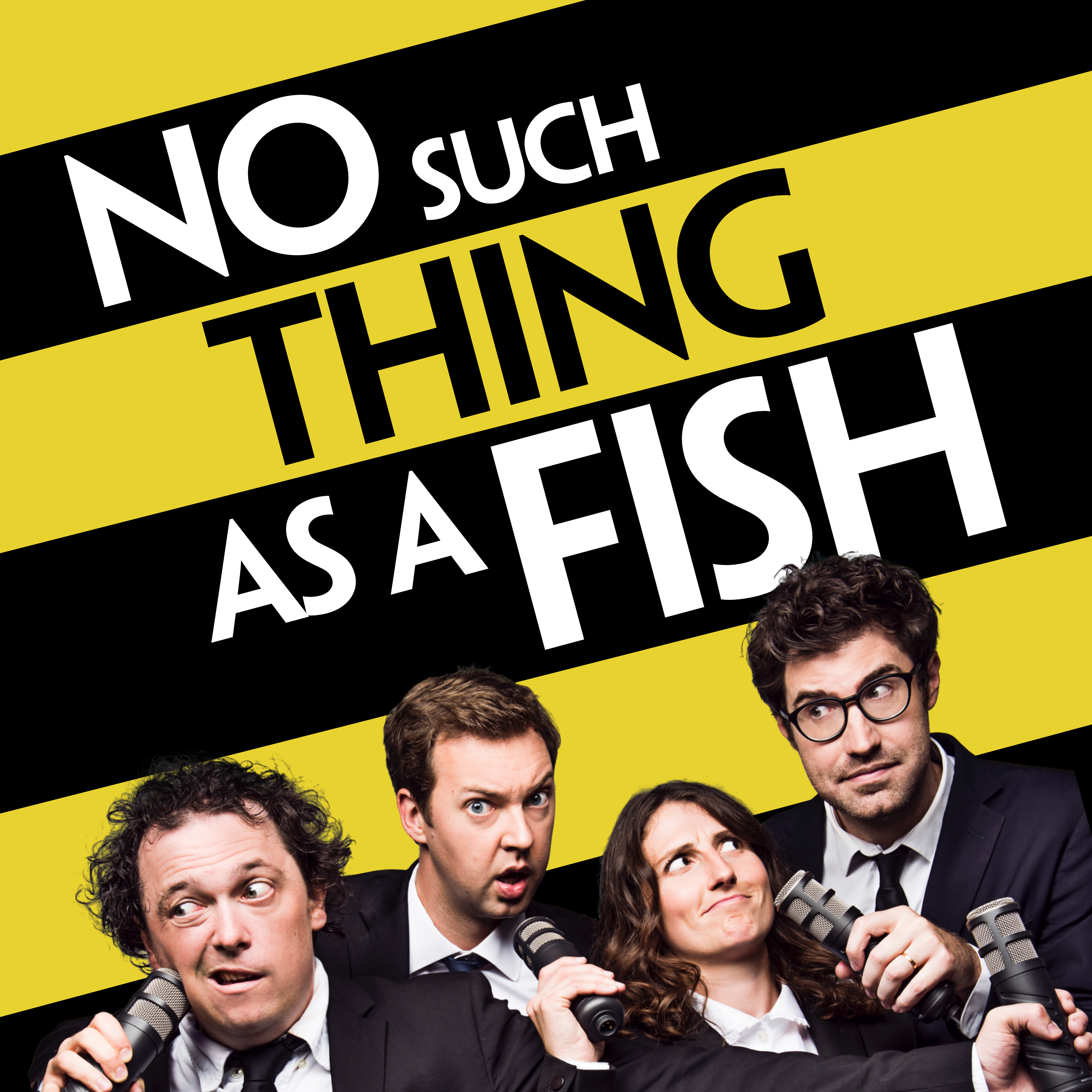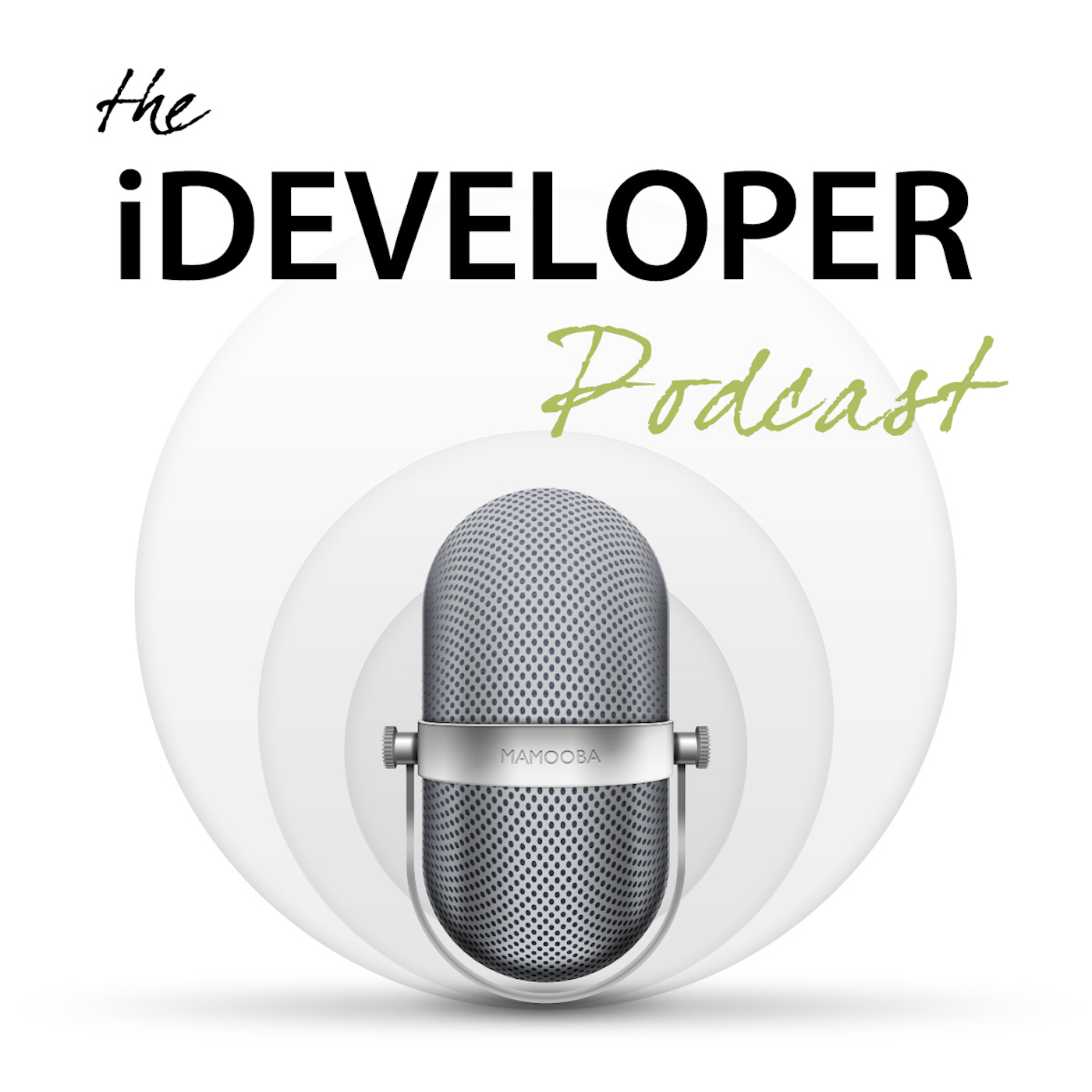
Piano, finally
Piano Finally is a podcast by an old bloke who is learning the piano, finally. I cover the process of learning the piano and music theory as an adult learner. I also review piano books, hardware and other materials from an adult learner's perspective.
Piano, finally
Episode 51 - Once a Day
Welcome to Episode 51 of Piano, Finally! This week, I talk about how my piano practice was affected by long work days, debating competitions, and the occasional musical side quest — like programming the Nord Stage 4 to sound like the iconic synth from Van Halen’s Jump. (You’ll hear my first attempt in the progress section.)
In the spirit of broadening musical horizons, this episode’s recommendation is the Early Music Sources channel, run by Elam Rotem. It’s a beautifully produced, deeply researched dive into the music of the 16th and 17th centuries — ideal if you're curious about how music evolved into what we hear today.
👉 Explore Early Music Sources
👉 Hear recordings by Elam Rotem
The essay this week is all about practice: how I’ve been organising mine, how it’s evolved, and why I’ve started playing each of my “ready” pieces just once a day. This one-take approach (also used for the progress recordings at the end of each episode) mirrors performance pressure — one shot, no do-overs. It makes for more mindful playing, even if the occasional mistake sneaks through. I break down how I categorise pieces (can’t play yet, sort of can, and performance-ready), and what my thirty-minute sessions tend to look like — or what gets skipped when time runs out.
The episode also includes a review of the Blue Mountains Musical Society’s production of Come From Away. The show is brilliantly cast, creatively staged, and a local production that holds its own against Broadway. And at $49 a ticket, it’s a bargain.
👉 Blue Mountains Musical Society – Book tickets
In the progress section: Mozart’s Der Vogelfänger bin ich ja, Wynn-Anne Rossi’s Wild Chase, and a first attempt at Van Halen’s Jump, patched together on the Nord Stage 4. The acoustic pieces were recorded using the Kawai NV10 with Pianoteq 8 on the M4 Pro Mac Mini, running the Anton Petrov Grand in Recording Mode 2.
Thanks again for listening. If you’re working on an instrument of your own, I’d love to hear how it’s going — send a note to david@pianofinally.show or visit the website at
👉 www.pianofinally.show
You can contact me:
- via email at david@pianofinally.show; this is probably the best option
- the show website, www.pianofinally.show
- Instagram and Threads @pianofinally
- and on YouTube
- all the podcast directories - list
- here's the RSS feed
Some of the links to books and other items mentioned in the podcast are affiliate links for Amazon or other providers. If you use one of these links, a commission may be paid to me at no additional cost to you. Thank you if you use a link.
All reviews of products, websites and services are unpaid, and no sponsorship has been received for any content on this podcast.
Episode 51 – Once a day
G’day, everyone. I’m David Reidy; welcome to Piano, finally, a podcast by an old bloke who is getting around to learning the piano, finally.
[Crab Canon]
Welcome
Welcome to show fifty-one. Thank you very much for listening. If this is the first time you’re hearing the podcast, I hope you enjoy what’s in the show. If you’re back for another episode, then thanks for returning. If you, too, are learning a musical instrument, let me know how you’re going with it. You can contact me at david@pianofinally.show.
I didn’t get as much practice done this week as I had hoped. One late finish at work and two nights of debating competition really ate into the practice schedule. I’m hoping that the next week will be a bit more productive, especially as there are only two piano lessons left for this term.
I found a little bit of time to explore more settings on the Nord Stage 4 keyboard and have been able to set the synthesiser section to sound like the opening of Van Halen’s Jump, which I think is the synth equivalent of Für Elise on the piano. I’ve included the Jump opening as a progress piece so you can hear my first attempt. Going from three pedals on the piano to 148 knobs and buttons on the Nord, is a lot of fun, and just a bit daunting.
[Crab Canon]
Podcast – Early Music Sources
I mentioned the Andy Chamberlain Music channel a couple of episodes ago, and how I had found some of the material about early music notation really interesting. In the notes for that episode was a reference to this week’s suggestion, the Early Music Sources channel.
Early Music Sources is run by Elam Rotem, a composer, singer and harpsichordist based in Basel, Switzerland. Elam specialises in the music of the 16th and 17th centuries and has recorded many examples. I’ll include a link to his YouTube page, which includes examples.
The Early Music Sources channel is accurately described. If you want to know more about the music of the Baroque and before, this is the place you should head. But avoid it if all you want to do is listen to the music; this channel is much more than a glorified playlist. If you look at the playlists that have been built as part of the channel, you will see the depth to which Elam has researched and explained early music.
There are five videos looking at the different temperaments used for tuning, twenty-one on performance practices and seven on musical notation that led me to this channel in the first place.
All of the videos have excellent production quality; they are well-produced, with clear audio, and the graphics and animations, although simple, effectively illustrate the points being made. It is clear that Elam invests a great deal of effort into the research and production of each video.
If you want a change from modern popular music, then the Early Music Channel is about as much of a change as you could imagine. It is full of fascinating details about the art that became the foundation for the classical and romantic music that followed. Many of the techniques used today in music, especially cinematic compositions, can be found in these ancient styles. Give Elam Rotem’s channel a watch and you are sure to deepen your musical understanding.
https://www.quintaprofeti.com/cd-releases
https://www.youtube.com/@EarlyMusicSources
[Crab Canon]
Essay – Once a day
I still mostly enjoy my daily piano practice. I usually miss one day each week due to after-work activities, but with the debating season now over, I’m hoping that I’ll be able to get a practice session in seven days a week. I used to practice in the morning before leaving for work, but as I’ve increased the distance I swim each day, that would now mean getting up far too early. So I practice when I get home.
Very slowly, I am refining what I do when I’m practising, but even after a year of progress, I still don’t think I’ve found the magic combination. Most of my practice at the moment is pieces and scales, and following Devi’s advice, I have divided the pieces into three sets. The pieces I can play, the pieces I can sort of play, and the pieces I can’t. How do I decide where a piece goes? I’ve got some guidelines.
A new piece starts out as something I can’t play. I start hands separately and just a few bars at a time, then hands together. Eventually, I will get through all the bars and be able to play all the way through, though generally far from perfectly. Rarely will I attempt to play the piece all the way through at this point – yes, I’ll give it a go just to see if I can do it, but it’s not a serious part of the practice.
When I first started learning, this section of practice was really all about learning the notes and where to put my fingers; note lengths and dynamics were not something I was really worried about. Devi has pointed out that at this point, I really should be paying attention to things like the dynamics, staccato markings, slurs and such so that I don’t get used to playing the wrong way and then have to go back and fix it. So I now try to make sure that I’m playing those things correctly. Timing and tempo, though, are still for later.
This section of the practice session is the longest, and it is the last part, usually taking fifteen to twenty minutes of the thirty-minute block. It is also the section that gets cut short if I don’t have the full half-hour. For example, today, with going to see Come From Away, marking the Year 7 science test and writing this for the podcast, I didn’t get to this section of the practice at all.
Once I can get through the piece with all of the notes correct and no complete stops while I work out where to go next, I move it to the “pieces I can sort of play” category. Practice here involves working through the whole piece, but stopping and repeating any section that I get wrong. Typically, that means going from a note or two before to a note or two afterwards, five times correctly. If I’m not in a hurry, it should be five times correctly in a row, if I make another mistake the count restarts.
At the same time, I’m working on getting an even tempo, not the correct tempo, but one with all the note values correct and with the dynamics, staccato and legato working properly. This is the place where the piece stays for the longest time. With the slightly longer pieces that I am now practising, some parts of the piece will be in this phase, while later parts of the work are still in the learning phase. This means that the older parts get less practice than the newer parts. I still give the piece a full run through all the parts I’ve worked on so far.
Eventually, I will have the piece at the place where I can play the whole number from start to finish, not at speed, but with the notes correct and with the correct rhythm and dynamics. After a bit of time being played fully through a few times during each practice, and still stopping to correct the inevitable mistakes. Eventually, I will reach the point where I consistently make it all the way through without mistakes.
The final stage is playing the piece twice per practice and then finally once per practice. At the moment, I have four pieces in this section of each practice session. The reason for this was explained to me by Devi.
It is easy to play a piece without worrying about minor mistakes if you’re only playing it for yourself. You can just go back and do it again, so you don’t have to pay much attention to what you’re doing. If, on the other hand, you are only going to get one chance to get it right, then you’ll be a lot more focused on what you are doing, and that will lead to a better outcome from the practice. Only getting one try per day is much more like the situation you have if you are playing for other people, and so I hope that it will make me a better player in the long run.
It's also why I have switched to a single take for the progress pieces at the end of the podcast. I find that I concentrate much more when I know I have only one shot at getting the piece correct. It does mean that occasionally you will get to hear a mistake, but that’s all part of progress.
I’m not saying that this way of organising practice is the best way to do it. It’s just the way I’m trying at the moment, and it seems to be effective for the stage I am at with my playing. It will probably evolve, and I’ll keep you posted.
[Crab Canon]
Review – Blue Mountains Musical Society – Come From Away
The Blue Mountains Musical Society is a local community group that has developed a reputation for high-quality musical theatre productions. The Blue Mountains is a well-known musical area with annual festivals across a wide range of genres. It’s also not a bad place to be if you want to meet musical instrument manufacturers.
The group puts on two productions each year; this year’s first is Come From Away, a musical by Irene Sankoff and David Hein. It is based on the events in the town of Gander, Newfoundland, on and after 11 September 2001. It follows the town’s residents and some of the passengers from the thirty-eight planes that were suddenly stranded at the airport.
The musical has a cast of sixteen. Each cast member fills a number of roles as both the townspeople and the plane passengers, but with small costume changes and very different accents, it is always clear who each of them is. The music is provided by seven musicians playing keyboard, guitars, woodwind, percussion and an accordion. The musicians are on stage towards the back, except for one number where they join the cast.
All the performances are excellent. There are no main characters in the show; everyone gets a chance to shine, and no one disappoints. I think everyone gets a solo at some point in the show, and in every case, the singing is first-class.
The staging is relatively simple, mostly chairs and tables, and with the cast moving them, the scenes change from the local Tim Hortons to the inside of an aircraft. It’s very effective, and the lack of anything complicated brings the music and performances to the fore.
If you are in Sydney or the Blue Mountains and you can get to the show, I’d recommend you make the effort. Given that theatre tickets in Sydney are well over $150 each, Come From Away tickets are just $49, and the quality of the production is easily equal to anything you’ll see on those more expensive stages.
If you can’t get to see the BMMS production, there is a live recording of the Broadway production available on Apple TV+. It’s almost as good as the local production. I think the Blue Mountains cast nailed the accents better than the cast on Broadway.
There’s a link in the show notes to the Blue Mountains Musical Society, and you can buy tickets from there. The tickets for Come From Away are selling quickly, and some performances are already sold out. At the end of October, their second production for the year will be Legally Blonde. I’ve already bought tickets for that.
[Crab Canon]
Closing
If you’d like to contact me, email is the best way. You’ll find me at david@pianofinally.show and the website at www.pianofinally.show. In both cases, pianofinally is all one word. The show is also available as audio-only on YouTube. You can subscribe via any popular iOS or Android podcast application or from directories such as Apple Podcasts, Spotify, or YouTube. I also post an excerpt and link for each episode as an Instagram reel.
If you’re learning an instrument, let me know where you are in your journey. What’s going well, and what are the challenges? How are you managing your time?
I’m going to see Sir Stephen Hough again on Friday evening, this time he is playing Mendelssohn with the Sydney Symphony Orchestra at the Opera House. I hope he’s got some encores prepared; the Mendelssohn Piano Concerto is only twenty minutes long.
So, until next week, I hope your piano stays in tune and you enjoy your time at the keys.
[Crab Canon]
Progress
There are three pieces in this week’s progress section. Die Vogelfänger bin ich ja by Mozart, Wild Chaseby Wynn-Anne Rossi and the opening to Jump by Eddie Van Halen. Jump was recorded with the Nord Stage 4 using a synthesiser patch I put together from watching some tutorials. It still needs some tweaking.
The Mozart and Rossi pieces were recorded using the Kawai NV10 as the keyboard and Pianoteq 8 on the M4 Pro Mac Mini, emulating the Anton Petrov Grand Piano in recording mode 2.
[Practice pieces]
Podcasts we love
Check out these other fine podcasts recommended by us, not an algorithm.

Connected
Relay
Upgrade
Relay
No Such Thing As A Fish
No Such Thing As A Fish
We Can Be Weirdos
Global
Stuff The British Stole
ABC and CBC
The iDeveloper Podcast
Steve Scott (Scotty) & John FoxRaven On: A Pop Culture Podcast
Natalie Bochenski & Stuart Layt
Smart Enough to Know Better
Dan Beeston & Greg Wah
TopMusic Piano Podcast
Tim Topham
The Chopin Podcast
Garrick Ohlsson and Ben Laude



